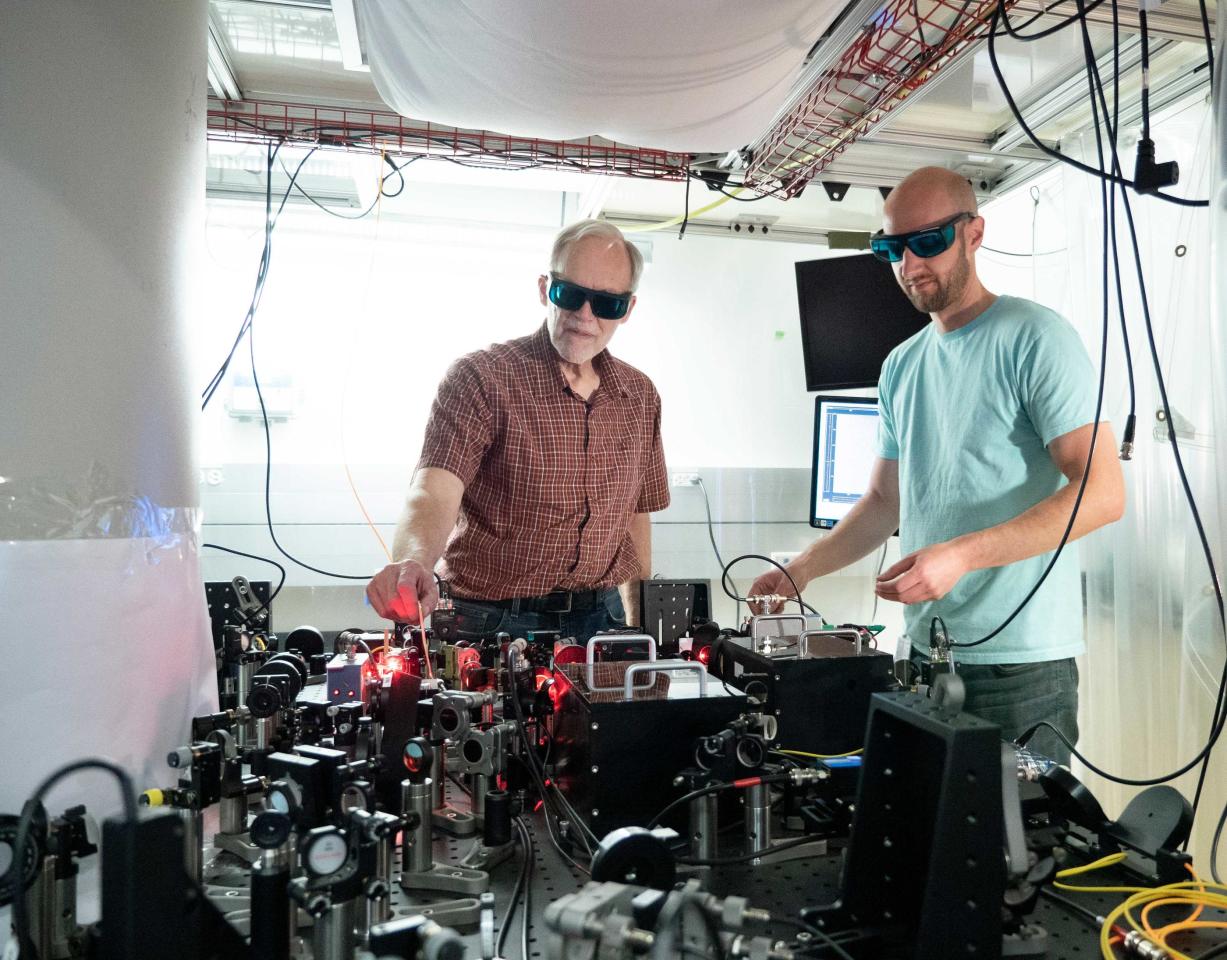Dark matter should be all around us, but the stuff is frustratingly elusive. Now physicists at the National Institute of Standards and Technology (NIST) have developed a new sensor that could help us detect certain hypothetical dark matter particles, using a two-dimensional quantum crystal.
Decades of astrophysical observations suggest that there’s far more mass out there in the cosmos than we can see. This has led scientists to the hypothesis that the universe is dominated by a strange substance we call dark matter, which doesn’t reflect, refract or interact with light in any way, and only influences regular matter through its strong gravitational pull.
Out in space, the observational evidence for this stuff keeps mounting, but it’s difficult to detect directly. And it’s not from a lack of trying – experiments are constantly being proposed or run, designed to detect different candidate particles based on different properties they may or may not have. Many use huge underground tanks filled with fluids that could detect a collision by a passing dark matter particle, while others could hunt for their gravitational pull on tiny pendulums.
One of the leading candidates is a hypothetical particle called an axion. Models suggest that axions would have a neutral electric charge, have almost no mass, drift around in waves, and most importantly have weak influences on electromagnetism. Experiments have hunted for this kind of interaction using “axion radios,” quantum bits in cavities, or donut-shaped magnets.
And now, the NIST team has developed a new kind of axion sensor. It’s made up of 150 beryllium ions trapped inside a magnetic field, which forces them to arrange themselves into a flat plane just 200 microns thick. When exposed to an electric field, the plane of atoms would move up and down like a drum – so if they’re kept isolated from any external electric fields, spotting this motion could indicate that an axion or other dark matter particle has passed through.

S. Burrows/JILA
The team says that the sensor would be 10 times more sensitive than other similar experiments, able to detect an electric field of 240 nanovolts per meter in one second. That could help it spot axions on a wider range of frequencies.
This extra sensitivity comes from the spooky world of quantum physics. Any displacement that an axion would have on the ions would be extremely small and hard to measure, so the researchers used quantum entanglement to amplify the signal.
The team zapped the ions with criss-crossed laser beams, which causes the motion of the ions to become inextricably linked with an electronic property called “spin.” All of the ions were made to spin “up,” so that any changes to their collective spin could reveal any displacement to their motion, caused by an axion. And conveniently enough, measuring their spin is relatively easy – if the ions are in a spin up state, the crystal will fluoresce, but if they’re in a spin down state it will stay dark.
The fluorescence of this quantum crystal can then reveal if an axion has whizzed through the instrument.
The researchers say that future work could improve the sensitivity of the detector 30 times over, by making 3D crystals containing 100,000 ions. If this experiment ever joins the hunt for dark matter, it could help unravel one of the most enduring cosmic mysteries.
The research was published in the journal Science.
Source: NIST
Source of Article